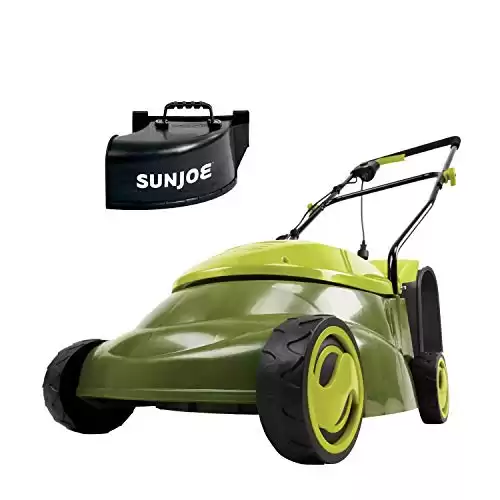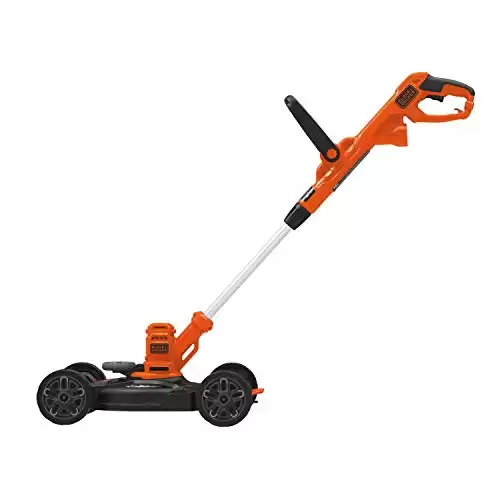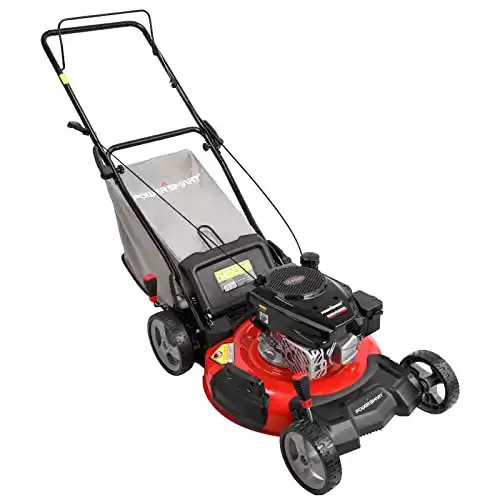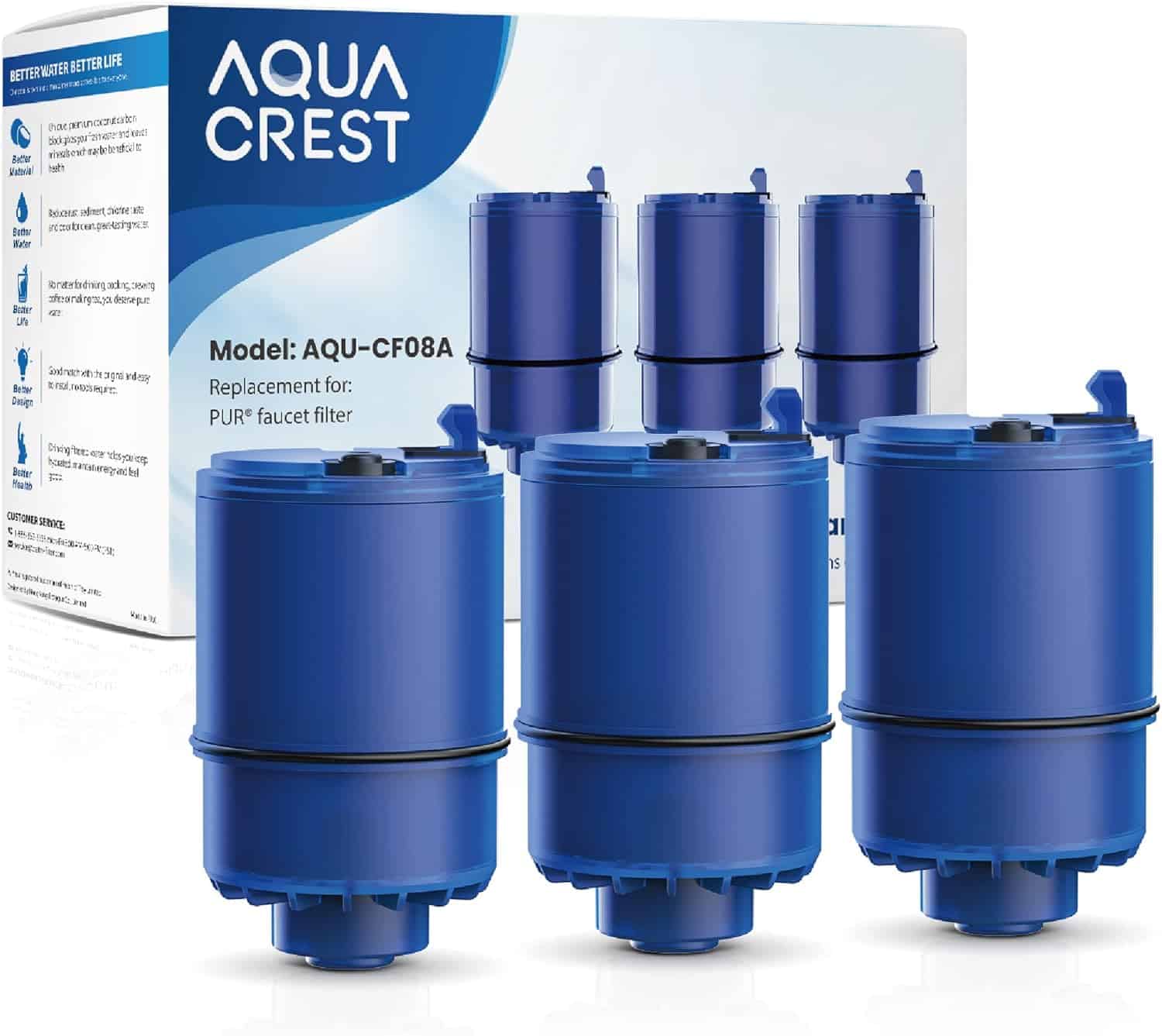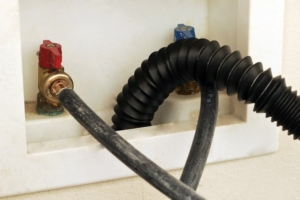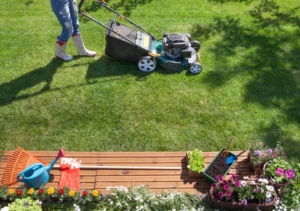The Guide to Lawn Care: Tips for a Healthy and Beautiful Yard
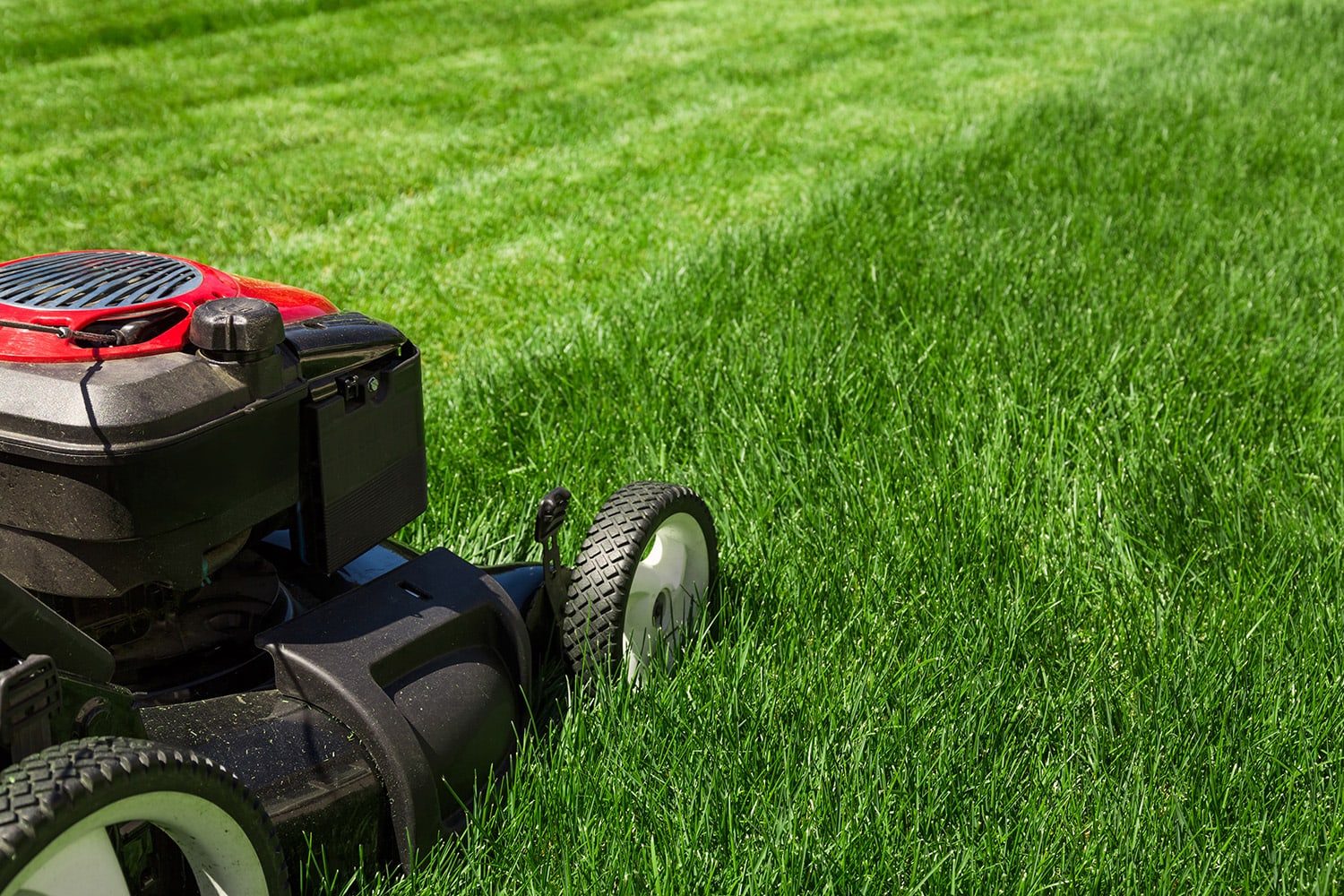
Having a healthy and beautiful lawn is the dream of every homeowner. A well-maintained yard not only enhances the overall aesthetics of your property but also provides a relaxing space for you and your family to enjoy. In this ultimate guide to lawn care, we will explore essential tips and practices to help you achieve a lush and vibrant lawn that will be the envy of your neighborhood.
Understanding Your Lawn
Types of grass and their characteristics: Understanding the different types of grass and their specific requirements will help you make informed decisions when it comes to lawn care.
Understanding the different types of grass and their specific characteristics is essential for making informed decisions when it comes to lawn care. Here is an expanded overview of various types of grass and their unique qualities:
1. Warm-Season Grasses:
– Bermuda Grass: Bermuda grass is a popular warm-season grass known for its excellent heat and drought tolerance. It has a fine texture, forms a dense turf, and can withstand heavy foot traffic. Bermuda grass requires full sun and regular mowing, and it goes dormant and turns brown during the winter months in cooler regions.
– Zoysia Grass: Zoysia grass is a warm-season grass that offers good tolerance to heat, drought, and foot traffic. It has a dense growth habit and a medium to coarse texture. Zoysia grass establishes slowly but forms a beautiful, resilient lawn once established. It thrives in full sun to partial shade and requires less water and mowing compared to other warm-season grasses.
– St. Augustine Grass: St. Augustine grass is a warm-season grass that excels in hot and humid climates. It has broad blades, a lush appearance, and good shade tolerance. St. Augustine grass requires moderate watering and performs well in coastal areas or regions with high humidity. It may not tolerate heavy foot traffic or cold temperatures.
2. Cool-Season Grasses:
– Kentucky Bluegrass: Kentucky bluegrass is a popular cool-season grass known for its attractive deep green color and fine texture. It forms a dense, self-repairing turf that can handle moderate foot traffic. Kentucky bluegrass prefers full sun to partial shade and requires regular watering and fertilization. It performs best in cooler climates.
– Tall Fescue: Tall fescue is a cool-season grass that offers good tolerance to heat, drought, and shade. It has a coarse texture and forms a deep-rooted, durable turf. Tall fescue requires less maintenance compared to some other grasses, and it performs well in a wide range of climates. It is often used for lawns, parks, and athletic fields.
– Perennial Ryegrass: Perennial ryegrass is a cool-season grass known for its fast germination and establishment. It has a fine to medium texture and provides a lush, green lawn. Perennial ryegrass is often used for overseeding warm-season lawns to maintain year-round green color. It prefers cooler climates and requires regular watering and mowing.
3. Transitional Grasses:
– Fine Fescue: Fine fescue is a group of cool-season grasses that includes several varieties such as creeping red fescue, chewings fescue, and hard fescue. These grasses have a fine texture, shade tolerance, and good adaptability to various soil conditions. Fine fescue performs well in cooler regions with moderate foot traffic and requires less maintenance compared to other grass types.
It’s important to note that the availability and suitability of grass types may vary depending on your geographical location, climate, soil type, and specific lawn conditions. Consulting with local lawn care professionals or agricultural extension services can provide valuable insights into the best grass types for your region.
When selecting a grass type, consider factors such as climate compatibility, shade tolerance, foot traffic, watering requirements, maintenance demands, and aesthetic preferences. By understanding the characteristics of different grass types, you can choose the one that aligns with your specific lawn care goals and environmental conditions, ensuring a healthy and vibrant lawn.
Lawn care Climate Considerations
Climate considerations and choosing the right grass for your region: Selecting grass varieties that are well-suited to your climate will ensure better growth and longevity.
Selecting the right grass for your region’s climate is crucial for establishing a healthy and beautiful lawn. Each grass type has specific climate preferences, and choosing a variety that is well-suited to your region will promote optimal growth, resilience, and longevity. Here’s an expanded discussion on climate considerations and choosing the right grass for your region:
1. Temperature Range:
– Warm-Season Grasses: Warm-season grasses thrive in regions with hot summers and mild winters. They are adapted to warm temperatures and have excellent heat tolerance. Examples include Bermuda grass, Zoysia grass, and St. Augustine grass. These grasses may struggle in regions with cold winters or frost.
– Cool-Season Grasses: Cool-season grasses are best suited for regions with moderate summers and cold winters. They can tolerate frost and are adapted to cooler temperatures. Examples include Kentucky bluegrass, Tall fescue, and Perennial ryegrass. These grasses may struggle in regions with hot, arid climates.
2. Sunlight Requirements:
Different grass varieties have varying sunlight requirements. Consider the amount of sunlight your lawn receives throughout the day when selecting the appropriate grass type.
– Full Sun: Some grasses, like Bermuda grass and Zoysia grass, require full sun, which means they need at least six to eight hours of direct sunlight each day. These grasses perform best in open areas with minimal shade.
– Partial Shade: If your lawn receives partial shade, with four to six hours of sunlight per day, consider grass varieties that tolerate shaded conditions. Fine fescue and certain types of Tall fescue are known for their shade tolerance.
3. Precipitation and Drought Tolerance:
Consider the average rainfall in your region and the drought tolerance of different grass types.
– High Rainfall: If you live in an area with high rainfall, you can choose grasses like Kentucky bluegrass, Tall fescue, or Perennial ryegrass, which can handle more moisture.
– Drought-Prone Regions: For regions with limited rainfall and frequent droughts, consider warm-season grasses like Bermuda grass or Zoysia grass, which have good drought tolerance. Additionally, certain varieties of Tall fescue, such as “turf-type” or “deep-rooted” Tall fescue, have better drought resistance compared to other cool-season grasses.
4. Soil Conditions:
Different grass types have different soil preferences. Consider your soil’s pH level, drainage capabilities, and fertility when selecting a grass variety.
– Soil pH: Some grasses, like Zoysia grass and St. Augustine grass, prefer slightly acidic soils, while others, such as Fine fescue, can tolerate more alkaline conditions. Conduct a soil test to determine your lawn’s pH level and choose grasses that are well-suited to your soil’s acidity or alkalinity.
– Drainage: If your soil has poor drainage, choose grass varieties that are more tolerant of wet conditions, such as Tall fescue or Fine fescue. For well-drained soils, a wider range of grass types can be considered.
– Soil Fertility: Some grasses, like Kentucky bluegrass, have higher nutrient requirements and perform best in well-fertilized soils. Consider the fertility of your soil and be prepared to provide appropriate fertilization based on the grass type you choose.
5. Local Recommendations and Expert Advice:
Seeking advice from local lawn care professionals, agricultural extension services, or nurseries can provide valuable insights into grass types that thrive in your specific region. They can provide guidance based on local climate conditions, soil types, and specific challenges or advantages your area may have.
Remember that the information provided here serves as a general guide, and it’s important to tailor your grass selection to your specific location and lawn conditions. By considering climate considerations and choosing the right grass for your region, you can establish a lawn that thrives, withstands environmental challenges, and provides long-term enjoyment.
Soil testing and analysis: Conducting soil tests to assess its composition and pH levels will help you determine the necessary amendments and fertilizers for optimal growth.
Essential Lawn Care Practices
A. Mowing techniques for a healthier lawn: Proper mowing practices, such as mowing at the correct height and frequency, promote strong root development and discourage weed growth.
B. Watering guidelines and efficient irrigation systems: Understanding how much and when to water your lawn, as well as utilizing water-efficient irrigation systems, will prevent overwatering and conserve water resources.
C. Fertilizing schedules and choosing the right nutrients: Establishing a fertilizing schedule and applying the appropriate nutrients will provide your lawn with essential elements for growth and vitality.
D. Weed control strategies and methods: Implementing effective weed control strategies, such as regular weed removal and appropriate herbicide application, will ensure a weed-free lawn.
E. Dealing with common lawn pests and diseases: Identifying and addressing common pests and diseases promptly will help protect your lawn from damage and maintain its health.
Lawn Maintenance Tips
A. Aerating and dethatching to improve soil health: Aerating and dethatching your lawn alleviate soil compaction and promote better air and water circulation to the roots.
B. Overseeding for thicker and fuller grass: Overseeding helps fill in bare patches and promotes a denser and more uniform lawn.
C. Managing shade and sun exposure: Understanding the sun and shade patterns in your yard will help you make informed decisions regarding tree trimming and plant placement.
D. Proper edging and trimming techniques: Precise edging and trimming create clean lines and give your lawn a well-manicured appearance.
Seasonal Lawn Care Calendar
A. Spring: Preparing for the growing season by cleaning up debris, applying pre-emergent weed control, and initiating proper watering and mowing routines.
B. Summer: Maintaining optimal growth and health by adjusting watering and mowing practices, monitoring for pests and diseases, and providing necessary nutrients.
C. Fall: Preparing for winter and promoting root development by aerating, overseeding, fertilizing, and adjusting watering and mowing routines.
D. Winter: Protecting your lawn during the dormant period by raking leaves, minimizing foot traffic, and clearing snow to prevent damage.
Troubleshooting Common Lawn Issues
A. Yellowing or browning grass: Identifying the causes of yellow or brown patches and implementing appropriate solutions, such as adjusting watering or addressing nutrient deficiencies.
B. Patchy or thinning areas: Understanding the reasons behind patchy or thinning areas and implementing techniques like overseeding or addressing underlying soil issues.
C. Grubs and lawn insect infestations: Recognizing signs of insect infestation, implementing integrated pest management strategies, and using appropriate insecticides when necessary.
D. Fungal diseases and their prevention: Identifying common fungal diseases, implementing preventive measures like proper watering and air circulation, and utilizing fungicides if needed.
Tools and Equipment for Effective Lawn Care
A. Essential tools for lawn maintenance: A comprehensive list of tools needed for mowing, edging, trimming, and general lawn care tasks.
B. Types of lawn mowers and their pros and cons: A breakdown of different lawn mower types and their advantages and disadvantages to help you choose the right one for your needs.
C. Other equipment for specific lawn care tasks: Highlighting additional equipment like aerators, dethatchers, and sprinkler systems for more specialized lawn care requirements.
|
$229.99
|
$89.00
|
N/A
|
Sustainable and Eco-Friendly Lawn Care Practices
A. Organic and natural alternatives to chemical fertilizers and pesticides: Exploring eco-friendly options for fertilizing and pest control, such as composting, organic fertilizers, and biological pest control methods.
B. Water conservation tips and strategies: Providing tips on how to conserve water while maintaining a healthy lawn, including proper watering techniques and utilizing rainwater harvesting systems.
C. Composting and recycling grass clippings: Demonstrating the benefits of composting grass clippings and utilizing them as a natural fertilizer for your lawn.
Enhancing Your Yard’s Aesthetics
Incorporating landscaping elements: Inspiring ideas for incorporating landscaping elements like flower beds, shrubs, and hardscapes to enhance the visual appeal of your lawn.
Incorporating landscaping elements in your lawn is a wonderful way to enhance its visual appeal and create a vibrant outdoor space. Here are some inspiring ideas for incorporating various landscaping elements like flower beds, shrubs, and hardscapes to transform your lawn:
1. Flower Beds:
– Colorful Borders: Create stunning borders along the edges of your lawn by planting flower beds filled with a mix of vibrant annuals and perennials. Choose a color scheme that complements your home’s exterior or opt for a mix of contrasting hues for a bold and eye-catching display.
– Focal Point Flowers: Use flower beds strategically to draw attention to focal points in your lawn, such as near entryways or around notable features. Plant tall and striking flowers like sunflowers or hollyhocks to create a visually captivating focal point.
– Seasonal Interest: Plan your flower beds to showcase seasonal blooms. Select a variety of flowers that bloom at different times throughout the year, ensuring that your lawn remains vibrant and visually appealing in every season.
2. Shrubs:
– Foundation Plantings: Use shrubs to frame the foundation of your home, providing a polished and cohesive look. Select evergreen shrubs for year-round greenery or mix in flowering varieties for added visual interest.
– Privacy Screens: Create privacy in your yard by planting dense shrubs strategically along boundaries or around seating areas. Consider taller options like arborvitae or boxwood that provide both privacy and aesthetic appeal.
– Layered Plantings: Create depth and dimension in your landscape by incorporating shrubs of different heights. Arrange taller shrubs at the back, medium-sized ones in the middle, and low-growing varieties at the front to create a visually pleasing layered effect.
3. Hardscapes:
– Pathways and Walkways: Install pathways and walkways throughout your lawn using materials like stone, gravel, or brick pavers. These hardscape elements not only provide functional access but also add structure and visual interest to your outdoor space.
– Retaining Walls: If you have slopes or uneven terrain, consider building retaining walls using natural stones or concrete blocks. These walls can serve as beautiful garden terraces, adding depth and creating flat areas for planting flowers or shrubs.
– Outdoor Living Spaces: Incorporate hardscape features like patios, decks, or pergolas to create functional and inviting outdoor living areas. Install seating, outdoor furniture, and even a fire pit or a barbecue area to make your lawn a cozy and enjoyable gathering space.
4. Water Features:- Ponds and Waterfalls: Install a small pond or a cascading waterfall to add a tranquil and soothing element to your lawn. The sound of running water and the beauty of aquatic plants can create a serene and inviting atmosphere.
– Fountain or Birdbath: Add a touch of elegance by incorporating a fountain or a birdbath. These smaller water features can be placed in flower beds or near seating areas, attracting birds while providing a visually appealing focal point.
5. Garden Sculptures:
– Artistic Accents: Install sculptures or art pieces strategically in your lawn to add a touch of creativity and personality. Choose sculptures that reflect your style, whether it’s modern, abstract, or traditional, and position them as focal points within flower beds or against hedges.
– Decorative Trellises and Arches: Use trellises or arches as functional and decorative elements in your lawn. Train climbing vines like roses or clematis to grow on them, adding vertical interest and a sense of enchantment.
Remember to consider the overall theme and style you want to achieve in your lawn. Whether you prefer a formal and structured design or a more natural and relaxed ambiance, incorporating landscaping elements will undoubtedly elevate the visual appeal and charm of your outdoor space.
Choosing the right plants and flowers for a cohesive look: Suggestions for selecting plants and flowers that complement your lawn and create a harmonious and inviting outdoor space.
Creating focal points and functional areas: Tips on designing focal points, such as a garden feature or seating area, to add interest and functionality to your yard.
Creating focal points and functional areas in your yard is an excellent way to enhance its overall appeal and maximize its functionality. Here are some tips on designing focal points and functional areas to add interest and purpose to your outdoor space:
1. Identify the Purpose: Before you start designing focal points and functional areas, determine the purpose they will serve in your yard. Do you want a tranquil seating area for relaxation, a vibrant garden feature for visual interest, or a play area for children? Understanding the purpose will help you make informed design choices.
2. Consider the Scale: When designing focal points, it’s essential to consider the scale and size of your yard. Large yards can accommodate bigger features like a pergola or a water fountain, while smaller spaces may benefit from a well-placed sculpture or a cozy seating nook. Ensure that the scale of your focal point complements the overall size of your yard.
3. Location and Placement: Choose strategic locations for your focal points and functional areas. Consider the natural flow of your yard, the direction of sunlight, and any existing landscape elements. Place focal points in areas where they will draw attention and create a sense of visual interest. For functional areas like seating areas, position them in spots that provide privacy, shade, or desirable views.
4. Use Landscaping Elements: Landscaping can greatly enhance the appeal of your focal points and functional areas. Use plants, flowers, shrubs, and trees to frame and complement your features. For example, a seating area can be surrounded by lush greenery or vibrant flowers, creating a cozy and inviting atmosphere. Select plantings that match the style and theme of your overall yard design.
5. Incorporate Hardscape Elements: Hardscape elements like pathways, decks, and patios can provide structure and define functional areas in your yard. Consider incorporating these elements to lead the eye towards your focal points and create a cohesive design. Use materials that complement your focal points, such as stone pavers or wooden decking, to ensure visual harmony.
6. Create Visual Contrast: To make your focal points stand out, consider creating contrast within your yard design. This can be achieved by using contrasting colors, textures, and heights. For instance, if you have a vibrant flower bed as a focal point, surround it with a neutral-colored pathway or install a trellis with climbing vines to add vertical interest.
7. Lighting for Ambiance: Proper lighting can transform your focal points and functional areas, extending their usability into the evening hours. Incorporate landscape lighting to highlight your focal points, emphasizing their beauty and creating a captivating atmosphere. Use soft, warm lighting for seating areas and brighter, focused lighting for features like water elements or sculptures.
8. Maintenance and Accessibility: Consider the practical aspects of your focal points and functional areas. Ensure that they are easily accessible and that maintenance requirements are manageable. A beautiful garden feature may lose its charm if it demands excessive upkeep, so select elements that align with your maintenance capabilities and time availability.
Remember, designing focal points and functional areas in your yard is a creative endeavor, and it should reflect your personal style and preferences. By following these tips, you can create a yard that is visually appealing, functional, and a joy to spend time in.
Frequently Asked Questions about Lawn Care
1. FAQ: How often should I mow my lawn?
Answer: The general rule is to mow your lawn once a week, but adjust based on grass growth. Never remove more than one-third of the grass blade height in a single mowing.
2. FAQ: What is the best time of day to water my lawn?
Answer: Water your lawn in the early morning, preferably between 4 a.m. and 9 a.m. This allows the grass to dry before evening and minimizes the risk of disease.
3. FAQ: How can I prevent weeds from invading my lawn?
Answer: Regularly mowing at the appropriate height, applying pre-emergent weed control in spring, and maintaining a healthy, thick lawn will help prevent weed growth.
4. FAQ: How often should I fertilize my lawn?
Answer: Fertilize your lawn 2-4 times a year, typically in spring, early summer, late summer, and fall. Follow the instructions on the fertilizer package for application rates.
5. FAQ: What can I do to promote better soil health?
Answer: Aerate your lawn annually to alleviate soil compaction and encourage better nutrient absorption. Also, add organic matter like compost to improve soil structure.
6. FAQ: How do I know if my lawn has a pest infestation?
Answer: Look for signs like discolored or damaged grass, holes in the ground, or visible pests. Consult a lawn care professional for proper identification and treatment options.
7. FAQ: Is it necessary to rake leaves in the fall?
Answer: Yes, removing fallen leaves from your lawn prevents suffocation and allows the grass to receive sunlight and air, maintaining its health during the winter months.
8. FAQ: Can I water my lawn too much?
Answer: Yes, overwatering can lead to shallow root growth, disease, and weed growth. Water deeply and infrequently to encourage deep root development and conserve water.
9. FAQ: Should I use organic or synthetic fertilizers?
Answer: Both options have pros and cons. Organic fertilizers provide long-term soil benefits, while synthetic fertilizers offer quicker results. Choose based on your preferences and needs.
10. FAQ: How can I revive a brown or damaged lawn?
Answer: Depending on the cause, solutions may include adjusting watering practices, addressing nutrient deficiencies, overseeding, or consulting a lawn care professional for guidance.
Maintaining a healthy and beautiful lawn requires dedication, knowledge, and proper care. By implementing some practices outlined in this guide, you can transform your yard into a lush and vibrant oasis that you can enjoy for years. Start taking action today and watch your lawn thrive!



